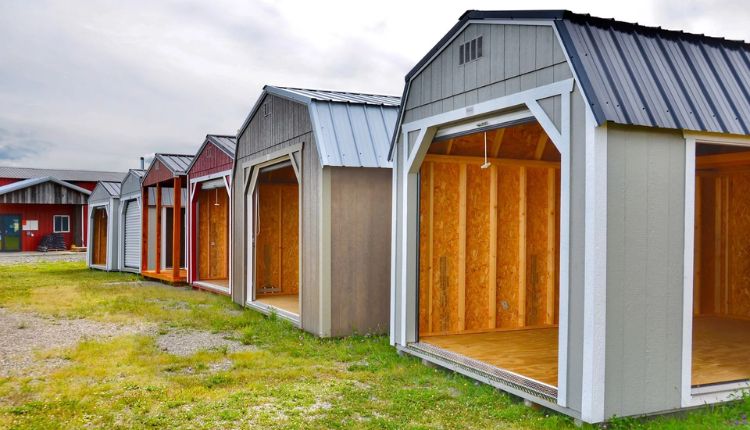As outdoor space becomes more valuable, the debate around storage solutions is evolving. Homeowners, farmers, construction professionals, and small business owners are increasingly questioning whether traditional wooden or metal sheds are still the most practical option. In their place, portable storage structures are gaining momentum as a cost-effective, durable, and flexible alternative.
But can these modular units truly outperform permanent sheds in long-term value and reliability—or is their popularity driven more by convenience than performance?
The Appeal of Portable Storage: Flexibility Meets Function
One of the biggest selling points of portable storage structures is mobility. Unlike permanent sheds, these structures can be relocated with relative ease, making them ideal for:
✅ Renters who may move frequently
✅ Construction sites requiring temporary on-site storage
✅ Homeowners planning future property expansions
✅ Businesses scaling operations seasonally
Instead of committing to a fixed structure, users can adjust storage placement as space needs evolve. This flexibility is especially valuable in industries like agriculture and events, where logistics shift quickly.
Cost Comparison: Upfront Savings vs. Long-Term Investment
Traditional sheds often require a concrete foundation, permits, professional installation, and weatherproofing—all adding significant expenses beyond the listed material price.
Portable structures, however:
✅ Require minimal site prep
✅ Often avoid permit requirements (depending on size and region)
✅ Come pre-built or quick-assembly
✅ Can be purchased or rented based on need
This reduced setup cost and time make them financially attractive, especially for temporary or seasonal applications. However, long-term users may need to evaluate durability to ensure cost savings hold up over time.
Durability: Temporary Does Not Mean Weak
Modern portable storage units are engineered using industrial-grade materials such as galvanized steel, marine-grade plywood, or reinforced plastics. Many are built to withstand:
✅ Heavy rainfall
✅ Snow accumulation
✅ Strong winds
✅ UV exposure
✅ Rough transport and frequent repositioning
Certain models, including container sheds, are repurposed from shipping containers, making them exceptionally durable and secure. Their weather-resistant design and steel construction often outperform traditional wood sheds in harsh environments.
Security and Weather Resistance: A Critical Comparison
A major issue with traditional wooden sheds is their vulnerability to rot, pests, moisture damage, and forced entry. Portable steel-based structures, by contrast, offer superior resistance to break-ins and environmental degradation.
In high-crime or weather-intensive areas, portable units made from container-grade materials provide peace of mind through lockable, reinforced doors and resilient shell construction.
Sustainability: Reuse and Repurpose vs. Demolish and Rebuild
Another hidden cost of traditional sheds lies in replacement or reconstruction needs. When a homeowner wants to upgrade or relocate a fixed shed, demolition becomes an issue, leading to waste and labor expenses.
Portable storage avoids this problem altogether—they can be reused in different locations or resold without contributing to construction waste. Repurposed industrial materials also appeal to consumers seeking environmentally responsible options.
Limitations and When a Traditional Shed Still Makes Sense
While portable storage is rising in popularity, it may not be the ideal solution for:
❌ Homeowners seeking a custom-designed structure for aesthetic landscaping purposes
❌ Locations with strict HOA restrictions on temporary buildings
❌ Permanent storage solutions requiring integrated utilities or workspace conversions
In such cases, traditional sheds with customizable architectural designs may better align with long-term visual and functional goals.
Who Stands to Benefit the Most?
✅ Contractors needing secure tool storage
✅ Farmers storing feed, machinery, or seasonal equipment
✅ Homeowners needing quick storage during renovations
✅ Event companies with traveling inventory
✅ Retailers managing fluctuating stock levels
✅ Individuals testing space needs before committing to a permanent structure
These groups particularly appreciate the ability to acquire, redeploy, or expand storage without permanent construction commitments.
Final Verdict: Replacement or Companion?
Portable storage structures are not simply competing with traditional sheds—they are redefining how people think about outdoor space management. In many cases, they offer superior durability, flexibility, and cost-efficiency, especially for functional, rather than aesthetic, storage needs.
Rather than asking if they can fully replace traditional sheds, a better question might be: Do consumers still need permanent sheds when storage can move, grow, and adapt alongside their needs?
For those prioritizing mobility, longevity, and affordability, the answer may already be leaning toward a more flexible future.






